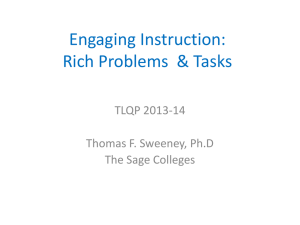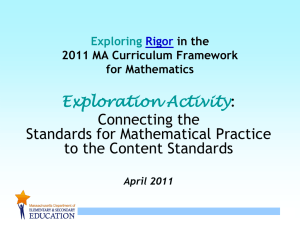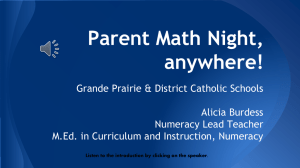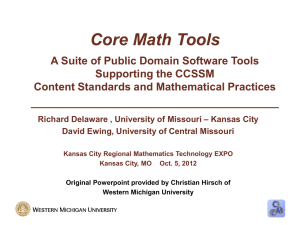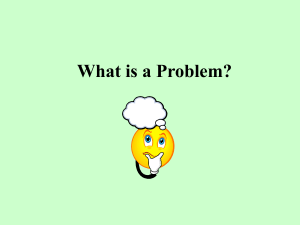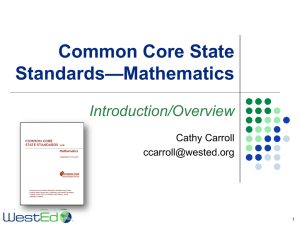Teaching Math with Comprehension Strategies
advertisement
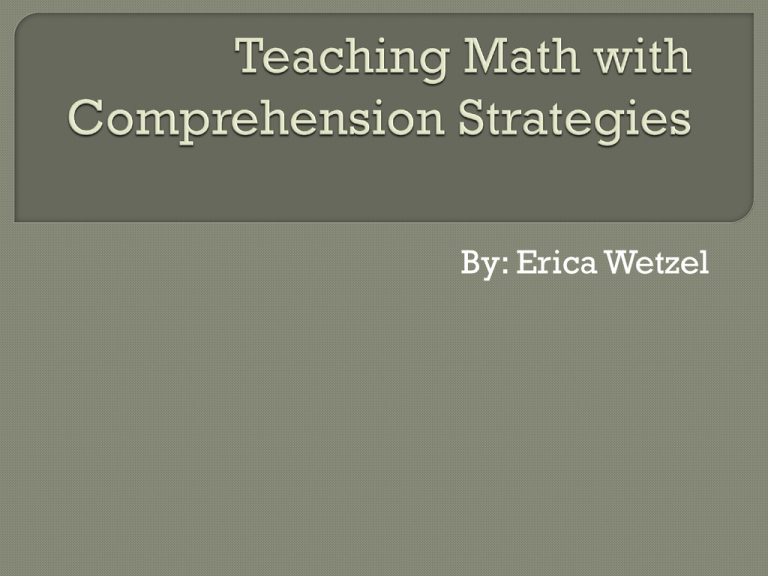
By: Erica Wetzel SKILL AND DRILL PRACTICE MATH COMPREHENSION STRATEGIES Yes, however many teachers were not taught the real math concepts, instead they were taught by skill, therefore they do not fully understand the concepts needed to teach them. Yes, because drill does not develop meaning. Repetition does not lead to understanding. Yes, if teachers continue to use skill and drill, as well as rote memorization with no connections to other mathematical concepts, our students will grow up with limited mathematical understanding. Teaching Math in America Compared to Other Countries Teachers in America do not regularly use cognitive thinking when applying and teaching mathematical concepts. In high scoring countries teachers use active questioning and dialogue to help students see and understand the connections among mathematical concepts. Teachers in countries that do well in math assign their students challenging mathematics problems, therefore they do not look for easy questions for their students, unlike American teachers. Throughout the United States teachers tend to focus on lowlevel skills and rarely address mathematical relationships. We, as educators, can no longer teach math the way we were taught using skill and drill and rote memorization. Research has shown students need the opportunity to discover, analyze, and make connections when learning about mathematical concepts. The Common Core Standards are designed based on what research has proven most effective . The kindergarten class this year is the first class to no longer be taught under the Indiana State Standards. We must begin to analyze how our math instruction will change to prepare our students for the National Common Core Standards. • • • • Use the mathematical language in your classroom as often as possible. Incorporate visuals that reinforce the math vocabulary concepts. Model thinking like a mathematician aloud. Have high expectations regarding what the students are to do. WITH PARTNERS INDEPENDENTLY Crespo, S. (2003). Learning to pose mathematical problems: exploring change in preservice teachers’ practices. Educational Studies in Mathematics, 243270. Grouws, D.A. and Hiebert, J. (2007). Effective teaching for the development of skill and conceptual understanding of number: what is most effective? National Council of Teachers Mathematics. Retrieved from http://www.nctm.org/news/content.aspx?id=8448 Hyde, A. (2007). Mathematics and cognition. Association for Supervision and Curriculum Development, 43-47. Shriki, A. (2009). Working like real mathematicians: developing prospective teachers’ awareness of mathematical creativity through generating new concepts. Professional Development Collection. doi: 10.1007/s10649-0099212-2 Zemelman, S., Daniels, H., Hyde, A. (2005). Best practice today’s standards for teaching and learning in america’s schools. Retrieved from http://www.heinemann.com/shared/onlineresources/E00744/sample.pdf






